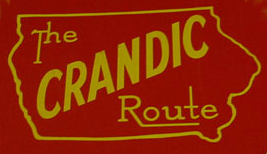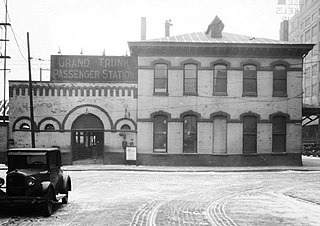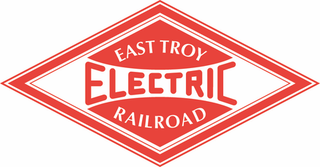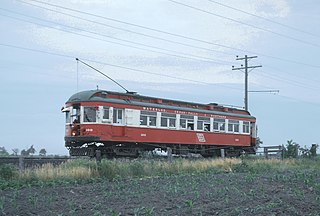
The Interurban is a type of electric railway, with streetcar-like electric self-propelled rail cars which run within and between cities or towns. They were very prevalent in North America between 1900 and 1925 and were used primarily for passenger travel between cities and their surrounding suburban and rural communities. The concept spread to countries such as Japan, the Netherlands, Switzerland, Belgium, Italy and Poland. Interurban as a term encompassed the companies, their infrastructure, their cars that ran on the rails, and their service. In the United States, the early 1900s interurban was a valuable economic institution. Most roads between towns and many town streets were unpaved. Transportation and haulage was by horse-drawn carriages and carts. The interurban provided reliable transportation, particularly in winter weather, between the town and countryside. In 1915, 15,500 miles (24,900 km) of interurban railways were operating in the United States and, for a few years, interurban railways, including the numerous manufacturers of cars and equipment, were the fifth-largest industry in the country. By 1930, most interurbans in North America were gone with a few surviving into the 1950s.

West Michigan and Western Michigan are terms for an arbitrary region in the U.S. state of Michigan's Lower Peninsula. Most narrowly it refers to the Grand Rapids-Muskegon-Holland area, and more broadly to most of the region along the Lower Peninsula's Lake Michigan shoreline, but there is no official definition.

The Grand Trunk Western Railroad Company was an American subsidiary of the Grand Trunk Railway, later of the Canadian National Railway operating in Michigan, Illinois, Indiana, and Ohio. Since a corporate restructuring in 1971, the railroad has been under CN's subsidiary holding company, the Grand Trunk Corporation. Grand Trunk Western's routes are part of CN's Michigan Division. Its primary mainline between Chicago and Port Huron, Michigan serves as a connection between railroad interchanges in Chicago and rail lines in eastern Canada and the Northeastern United States. The railroad's extensive trackage in Detroit and across southern Michigan has made it an essential link for the automotive industry as a hauler of parts and automobiles from manufacturing plants.

The Cedar Rapids and Iowa City Railway, also known as the CRANDIC, is a Class III railroad operating in the US state of Iowa.

The Chicago Aurora and Elgin Railroad (CA&E), known colloquially as the "Roarin' Elgin" or the "Great Third Rail", was an interurban railroad that operated passenger and freight service on its line between Chicago and Aurora, Batavia, Geneva, St. Charles, and Elgin, Illinois. The railroad also operated a small branch to Mt. Carmel Cemetery in Hillside and owned a branch line to Westchester.

The Lackawanna & Wyoming Valley Railroad, more commonly known as the Laurel Line, was a Pennsylvania third rail electric interurban streetcar line which operated commuter train service from 1903 to 1952, and freight service until 1976. Its main line ran from Scranton to Wilkes-Barre.

The Grand Trunk Milwaukee Car Ferry Company was the Grand Trunk Western Railroad's subsidiary company operating its Lake Michigan railroad car ferry operations between Muskegon, Michigan, and Milwaukee, Wisconsin, from 1905 to 1978. Major railroad companies in Michigan used rail ferry vessels to transport rail cars across Lake Michigan from Michigan's western shore to eastern Wisconsin to avoid rail traffic congestion in Chicago.

Brush Street Station was a passenger train station on the eastside of downtown Detroit, Michigan, located at the foot of Brush Street at its intersection with Atwater Street and bordered by the Detroit River to the south.

The Detroit and Toledo Shore Line Railroad is a historic railroad that operated in northwestern Ohio and southeastern Michigan.

The East Troy Electric Railroad is an interurban heritage railroad owned and operated by the East Troy Railroad Museum. Passenger excursions run on a 7-mile (11 km) stretch of track from East Troy to Mukwonago, Wisconsin.
The Indiana Railroad (IR) was the last of the typical Midwestern United States interurban lines. It was formed in 1930–31 by combining the operations of the five major interurban systems in central Indiana into one entity. The predecessor companies came under the control of Midland Utilities, owned by Samuel Insull. His plan was to modernize the profitable routes and abandon the unprofitable ones. With the onset of the Great Depression, the Insull empire collapsed and the Indiana Railroad was left with a decaying infrastructure and little hope of overcoming the growing competition of the automobile for passenger business and the truck for freight business. The IR faced bankruptcy in 1933, and Bowman Elder was designated as the receiver to run the company. Payments on bonded debt were suspended. Elder was able to keep the system virtually intact for four years, and IR operated about 600 miles (970 km) of interurban lines throughout Indiana during this period. During the late 1930s, the routes were abandoned one by one until a 1941 wreck with fatalities south of Indianapolis put an abrupt end to the Indiana Railroad's last passenger operations.
The Youngstown and Ohio River Railroad, or Y&OR, was one of the smaller interurban railways in the state of Ohio. Along with the Youngstown and Southern Railway, the Y&OR formed a traction link between Youngstown, Ohio and the Ohio River at East Liverpool. It served several coal mines in the area and it was distinguished by the unusual feat of electrifying a section of a steam railroad, the Pittsburgh, Lisbon and Western Railroad, as part of a trackage rights agreement. The Y&OR operated for 24 years.
Michigan United Railways (MUR) was an interurban which owned and leased numerous lines in the state of Michigan during the early twentieth century.

The Coopersville Station, built as the Grand Rapids, Grand Haven and Muskegon Railway Depot is a historic railway station once used by the Grand Rapids, Grand Haven and Muskegon Railway in Coopersville, Michigan. The Coopersville Area Historical Society and Museum is now housed in the station.

The Scranton Railway Company built and operated electric trolleys in and around Scranton, Pennsylvania, from 1896 until 1954.
The Chicago Lake Shore and South Bend Railway formed in 1901, is the earliest predecessor of the Chicago South Shore and South Bend Railroad.
Harbor Transit is the primary bus agency providing intra- and inter-city public transportation service for the Ferrysburg–Grand Haven–Spring Lake tri-cities region in northwestern Ottawa County, Michigan, which is considered part of the Grand Rapids metropolitan area. The primary year-round service is demand-responsive point-to-point transportation; in addition, Harbor Transit operates two seasonal deviated routes during the summer.

The Waterloo, Cedar Falls and Northern Railway (WCF&N) was an electric interurban railway that operated in the US state of Iowa.














